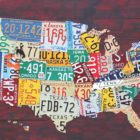
Editor’s note: This interview with Virginia Gross, member of the Exempt Organizations (EO) subcommittee of the IRS Advisory Committee on Tax Exempt and Government Entities (ACT), delves into the current state of the regulation of exempt organizations by the IRS. Gross describes a major shift at the IRS that combines a greater use of technology to review returns with a more siloed approach to its various roles. All of this adds up to a sense that there will be less discretion by the Exempt Organizations division right at the point when the floodgates have been opened with the Form 1023-EZ.
As a shareholder with Polsinelli PC, Gross focuses on providing advice and counsel to nonprofit and tax-exempt organizations on all aspects of tax-exempt organizations law—such as their formation, qualification, activities, and business ventures—and advises nonprofit clients on issues regarding their operations, fundraising practices, grantmaking, unrelated business income planning, joint venturing and partnering, and the use of supporting organizations and for-profit subsidiaries. Her publications include Nonprofit Governance: Law, Practices & Trends (2009) and The New Form 990: Law, Policy, and Preparation (2008), published by Wiley & Sons. She is also a contributing author to The Jossey-Bass Handbook of Nonprofit Leadership and Management (2011) and Nonprofit Management 101: A Complete and Practical Guide for Leaders and Professionals (2010).
This article is from the summer 2016 edition of the Nonprofit Quarterly magazine, “The New Nonprofit Regulatory Environment: What You Should Know.”
Ruth McCambridge: The assumption on the part of nonprofits has always been that the IRS had a primary role in its monitoring and regulation—and sometimes, though relatively rarely, in enforcement. Can you talk a little bit about how that may have changed over the past decade or so?
Virginia Gross: The IRS has always had a role in determining whether an organization fits into a particular tax-exempt organization category—and it still does. It has produced guidance in the form of revenue rulings, information letters, and lots of private letter rulings, allowing taxpayers to ask specific questions about whether their activities qualified, whether certain things they do could jeopardize their status, and what would be the tax treatment of those activities. And then, certainly in the past, we saw a lot of compliance checks. Many of these compliance checks have been industry-specific, like the big hospital compliance check many years ago—and, of course, the college and university study several years ago was a huge one.
But a lot has changed internally that, in the end, will have external effects. It is a reorganization that more strictly assigns certain kinds of tasks to specific departments. First, we’ve had the big shift of employees from the Exempt Organizations division to the Chief Counsel division, and now that division is doing everything with private letter rulings, technical advice memoranda, and formal guidance. The EO division is now more about the determinations function (which concentrates on reviewing applications for tax-exempt status) and the exam function (which involves auditing exempt organizations).
This likely has owed from the 501(c)(4) brouhaha, which caused Congress to take a look at the EO division and work at eliminating discretionary or subjective power over nonprofits. I don’t think that ten years ago we would have seen things like the spending bill associated with PATH, the Protecting Americans from Tax Hikes Act of 2015, where you had Congress saying to the IRS that it couldn’t issue the 501(c)(4) regulations—that they were going to restrict the IRS from doing that.
RM: So, it’s the imposition of limitations on the IRS’s discretion?
VG: Exactly. And the IRS itself is moving to be more objective in other areas, too. That lessening of discretion is also seen in a more automated exam function—one that is being implemented more broadly and organized around a system of approximately 190 Form 990 queries, designed to surface potential compliance risks. What the IRS is saying is that this is going to lead to more objective examination and review of exempt organizations, because basically they’ll take all the 990s, they’ll run them through the queries, and then, based on those queries, they’ll identify the organizations that are more at risk for noncompliance.
So, rather than having to pick an industry and say, “We’re going to study colleges and universities,” “We’re going to study hospitals,” or, “We’re going to study social clubs,” the new process will instead study all exempt organizations that file 990s, and decide who’s going to be examined based on those queries.
RM: Can you talk a little bit about the queries?
VG: Well, they’re keeping those very close to their chest. But I can imagine they might touch on such matters as loans with officers or directors, the existence or not of a conflict-of-interest policy, and how you’re answering certain questions on Schedule L—and seeing if all that matches up. Certainly, they might look for information that could give rise to intermediate sanctions, or items that might give rise to questions concerning unrelated business income. I think that those more major categories and topics would be what the queries are focused on, but we really don’t know. This is purely speculation on my part.
RM: When would the queries be made?
VG: I think after the returns are led, it would be part of the review process of the returns. Right now, I believe that less than 1 percent of exempt organizations are examined, because it takes a lot of manpower to pull a 990, review it, and decide if there are things on it that should be questioned or looked at further.
RM: What are we headed for now?
VG: The new process will vastly increase the number of returns the IRS can look at, and there may be a greater likelihood of a more qualitative exam if the query process raises warning flags.
The IRS has stated publicly that it will be doing more limited-scope exams and correspondence exams. So, I would imagine that the rest line of attack might be a letter from the IRS asking for an explanation. Or, if a return surfaces a number of problems, an organization might get a letter saying a revenue agent is going to be coming to visit and needs to look at its books and records.
RM: So, the way people answer questions on their returns will be under tighter scrutiny in the future because we’re dealing with a more automated system?
VG: I think that exempt organizations will want to be very careful about how they’re answering questions on the Form 990—making sure that they’re being very accurate. And they will want to be very careful about completing the other required parts or schedules if they’re answering a question that then requires a schedule or another part of the form to be filled out. The IRS has stated that in 2016 its goal is to conduct 7,000 exams—which is up from 6,300 in 2015.1
RM: Can you talk a little about what effect the use of the Form 1023-EZ has had on the flow of the approval process for tax exemption?
Sign up for our free newsletters
Subscribe to NPQ's newsletters to have our top stories delivered directly to your inbox.
By signing up, you agree to our privacy policy and terms of use, and to receive messages from NPQ and our partners.
VG: Because of the EZ, the backlog of applications has dramatically decreased. Apparently, over half of new organizations are able to file the EZ, so that has freed up the IRS to look at the other 1023s and 1024s—the long forms being led. And last I saw, it was about 100 days average turnaround time as compared to about nine to twelve months previously. So, this is a really good time to be filing a Form 1023 or 1024, because they are being processed more quickly.
RM: Is the overall effect of that a positive or a negative, do you think?
VG: I think for the long form it’s a very positive result, because there’s a lot of satisfaction. You can form an organization and know that you’re probably going to have your determination letter from the IRS in four months, and then you can be fully operational. Now, with the EZ organizations, I still hear a fair amount of complaints about how their activities and organizational documents are not going under any kind of serious review by the IRS to make sure they’re meeting the requirements of their tax-exempt status.
RM: So, there’s less of a problem getting through over the threshold.
VG: Right.
RM: Are we likely to see a real increase in the numbers of nonprofits?
VG: Oh, yes, I think we are. The IRS is reporting that 58 percent of the determinations so far have been on the Form 1023-EZ, and the approval rate this fiscal year has been 94 percent. With the easier Form 1023-EZ process, I think the number of new Section 501(c)(3) organizations will be increasing. But I don’t know the statistics. Also, the IRS just announced that the user fee for the 1023-EZ is going down—from $400 to $275, effective July 1, 2016.
One other point about the EZ forms is that the IRS is going back to 3 percent of the 1023-EZ filers and asking them a series of questions. That’s their backend check on the 1023-EZ filer.
RM: What other changes are we potentially looking at?
VG: One of the changes we are seeing as it relates to exempt organizations is that there seems to have been a decision made to be a little more formal about how things are being done—that the determinations folks are the ones best suited to be making determinations and the exam folks are the ones best suited to be making adjustments and corrections, but not determinations. For example, if the IRS is examining an exempt organization, the examining agent can no longer approve a change to the organization’s exempt status. The agent can only revoke the current exempt status, and then the organization is going to have to apply to have the new exempt status recognized. So there will be a waiting period between the two events. And part and parcel of that is also a question that’s been getting a lot of discussion at conferences and such, which is when you request a private letter ruling on whether an exempt organization can engage in certain activities, can you get a ruling on whether the organization can keep its tax-exempt status, or will the activity jeopardize its exempt status? Well, we can no longer do that. We can write in and say an organization wants to do these activities, and, for example, ask if they are permissible activities for a 501(c)(3) organization. But the Chief Counsel division can’t rule on whether the activities are going to jeopardize the exempt status or cause the organization to lose its status, because that’s a determinations function.
RM: What else will our readers potentially experience as changes from the IRS?
VG: Well, as I mentioned, the EO division shifted a number of employees over to Chief Counsel, and that’s where more of the guidance is coming from. They’re being very forthcoming, though, in telling taxpayers that, when they come in for a private letter ruling, they should request a pre-ruling conference and talk about the issues ahead of time. So, they’re being very generous with those pre-ruling conferences, and encouraging them. And I think that’s a positive change that your readers may want to know about.
Another thing the IRS is trying to do is become more organized through something called Knowledge Networks, or K-Nets. These are collections of written materials and other resources that function as networks to organize the wisdom in the agency in a more cohesive and consistent way, for everyone at the IRS to use—but within the IRS only. They’re not going to be made public for the rest of us to use. They already have a K-Net on private foundations and one on unrelated business income, for instance. I think there are six altogether that are applicable to exempt organizations. But the IRS is making public its new “issue snapshots” on various exempt organization issues.2
Again, the idea is consistency and objectivity in giving guidance and making determinations—the intention being that if everyone is reading from the same playbook, the law will be more consistently applied.
RM: So, the big news, really, is that the IRS is trying to organize itself—at least internally—to be more consistent and less vulnerable to attacks. At the same time, it’s broadening the way it will alert itself to problems related to individual organizations, rather than looking at particular fields for particular issues. Do you think it will still be looking at doing some of those field-wide compliance checks, or do you think this really is a replacement?
VG: I think it’s going to be moving away from industry compliance checks and more toward what the IRS calls “data-driven decision making”—where the IRS is trying to remove subjectivity out of the mix.
But the law has not changed. So, as far as exempt organizations are concerned, I don’t think they should feel like the playing field isn’t what it used to be. I mean, they’re still having to abide by the same laws. It shouldn’t change how they’re doing things. But it does mean that they probably need to pay more attention to their Form 990s going forward. There may be an increase in the IRS’s ability to review the activities of exempt organizations with this shift to the data-driven decision making.
RM: In short, how do you think nonprofits might experience the relationship with the IRS differently over the next few years?
VG: Well, in our June 2016 advisory committee report, we are encouraging the IRS to engage in more communication with the sector and include more voices in those conversations.3 And we are encouraging the IRS to give the sector easier access to the knowledge and tools it needs to be compliant, through educational materials and informal guidance that apply to current types of issues experienced by nonprofits. So much of the existing guidance is very dated. We’re hopeful that the IRS will be able to do this, but unfortunately it is still under severe budget restraints. But, for now, the IRS is working with what it has to reach out to the sector and to oversee exempt organizations in a meaningful way.
Notes
- Comments from Margaret Von Lienen, director of exempt organizations examinations, delivered at the TE/GE Joint Councils on February 26, 2016, as reported in the EO Tax Journal.
- See www.irs.gov/government-entities/tax-exempt-and-government-entities-issue-snapshots for access to the “issue snapshots.”
- Amy Coates Madsen et al., “Stewards of the Public Trust: Long-Range Planning for the Future of the IRS and the Exempt Community,” in Advisory Committee on Tax Exempt and Government Entities (ACT): 2016 Report of Recommendations, IRS.gov, Forms and Publications, June 8, 2016, 89–156.












